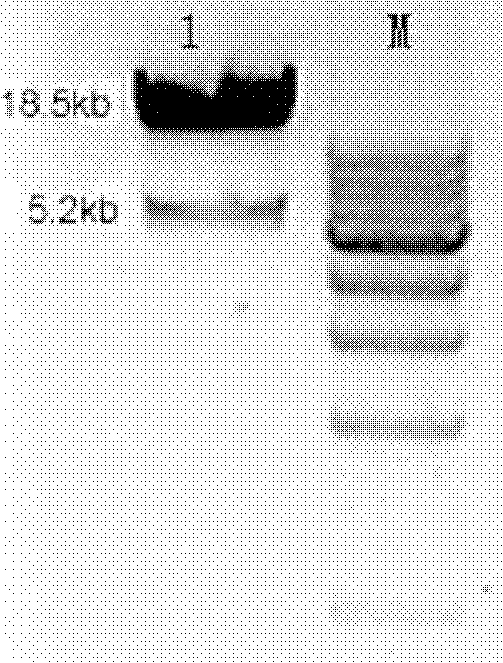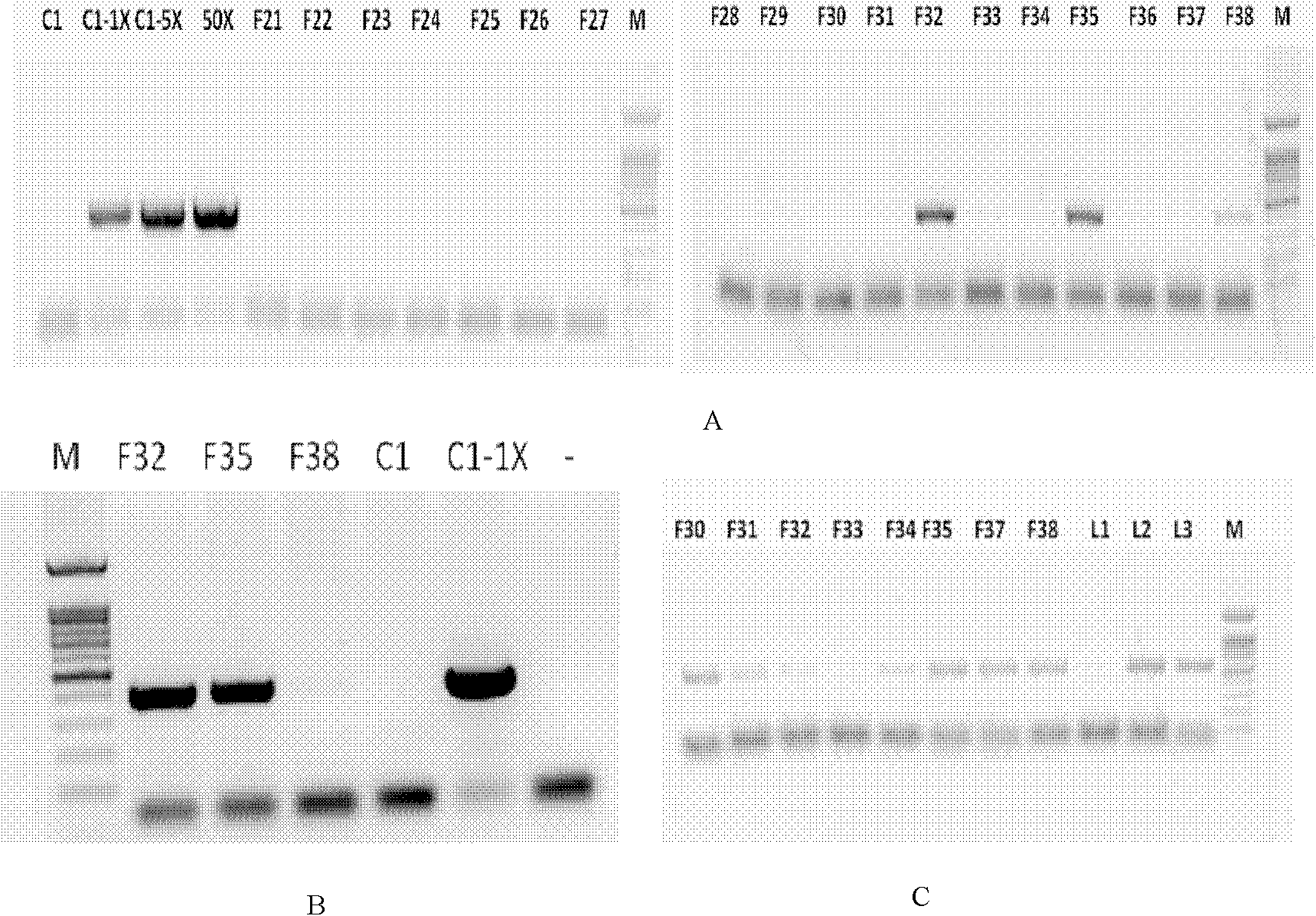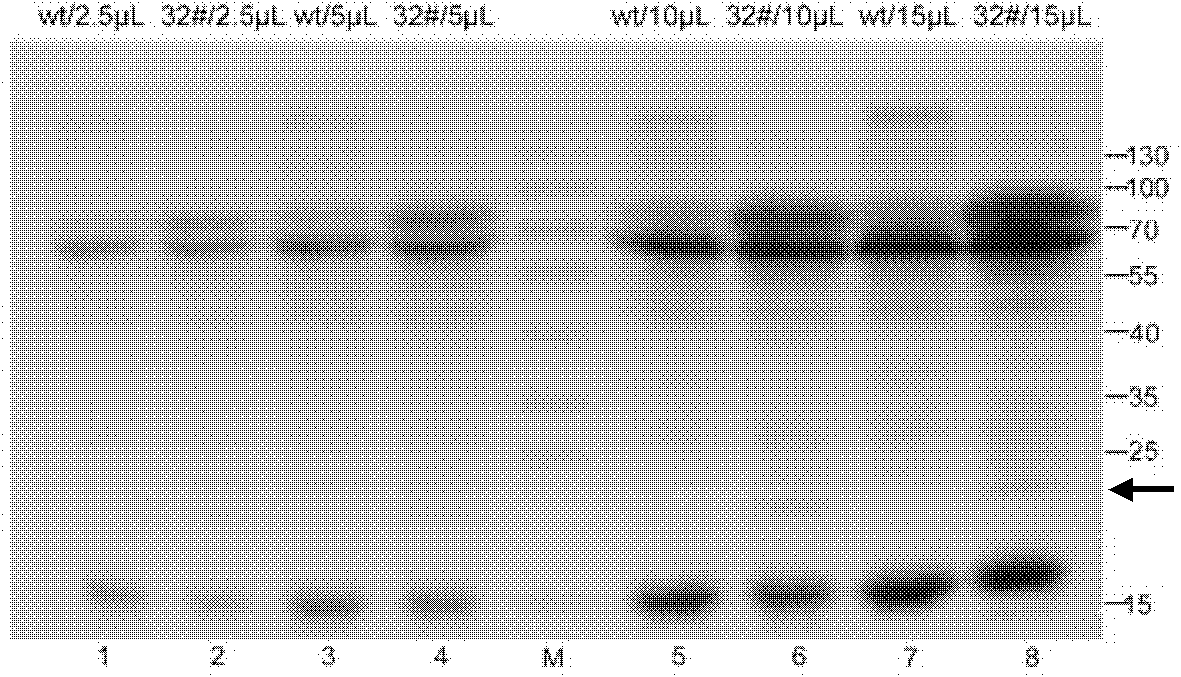Method for constructing anti-mammitis transgenic mouse model and special vector for method
A mastitis and gene technology, applied in the field of construction method of anti-mastitis transgenic mouse model and its special carrier, can solve problems such as antibiotic residues and bacterial resistance
- Summary
- Abstract
- Description
- Claims
- Application Information
AI Technical Summary
Problems solved by technology
Method used
Image
Examples
Embodiment 1
[0039] Embodiment 1, transgenic recombination vector construction
[0040] The transgenic recombination vector pBC1+adapter+seq2+IRES-seq3 is a vector obtained by inserting sequence 1 in the sequence table between Sac1 and Apa1 of pBC1+adapter, and it can also be named plasmid pBC1-Lysotaphin-peptidoglycan endolysin B30.
[0041] Among them, sequence 1 consists of 2065 nucleotides, lysostaphin from the 1st to 799th nucleotides at the 5' end, and lysostaphin from the 800th to 1469th nucleotides at the 5' end is internal ribosome entry The site (Internal ribosome entry site, IRES), the 1470-2065 nucleotides from the 5' end is peptidoglycan endolysin (Peptidoglycan endolysin B30).
[0042] The pBCl vector uses the goat β-casnein promoter to guide the high-efficiency and specific expression of the recombinant protein in mammary gland tissue, and was purchased from Invitrogen Company, Cat. No. K27001.
[0043] Internal ribosome entry site (Internal ribosome entry site, IRES), IRES c...
Embodiment 2
[0058] Embodiment 2, construction of anti-mastitis transgenic mouse model
[0059] 1. Obtaining DNA Fragments by Microinjection
[0060] Take about 2 μL of the plasmid pBC1+adapter+seq2+IRES-seq3 obtained in Example 1, add restriction enzymes AatII and NarI, restriction enzyme reaction buffer, add water to make the volume to 40 μL, flick the tube wall Mix evenly, place in a 37°C incubator for 1 hour, and then take 3 μL of the reaction solution for 1% agarose gel electrophoresis to observe the enzyme digestion results.
[0061] The reaction system for enzyme digestion of transgene vectors is shown in Table 1:
[0062] Table 1 Reaction system for enzyme digestion of transgenic vectors
[0063]
[0064] The results of DNA agarose gel electrophoresis figure 1 As shown, 1: AatII and NarI digested fragments; M: 1000bp DNAladder, recovering 18.5kb digested fragments to obtain microinjected DNA fragments, after sequencing, the microinjected DNA fragments include sequence 1 in th...
PUM
| Property | Measurement | Unit |
|---|---|---|
| Outer diameter | aaaaa | aaaaa |
| Length | aaaaa | aaaaa |
Abstract
Description
Claims
Application Information
 Login to View More
Login to View More - R&D
- Intellectual Property
- Life Sciences
- Materials
- Tech Scout
- Unparalleled Data Quality
- Higher Quality Content
- 60% Fewer Hallucinations
Browse by: Latest US Patents, China's latest patents, Technical Efficacy Thesaurus, Application Domain, Technology Topic, Popular Technical Reports.
© 2025 PatSnap. All rights reserved.Legal|Privacy policy|Modern Slavery Act Transparency Statement|Sitemap|About US| Contact US: help@patsnap.com



